#Shandong Province
Text



聊城 Liaocheng (山东 Shandong) (2) (3) (4) by rauxa i seny
Via Flickr:
(1) Una altra vista del llac i de l'enorme pont que el creua des de la ciutat antiga. / Another view of the lake and the huge bridge that crosses it from the old town.
(2)Muralla i pont. Des de dalt de la muralla es contemplen vistes sobre la ciutat antiga i el llac. / From the top of the wall you can see views of the old city and the lake.
(3) L'hora de l'àpat. Dos joves han muntat un petit negoci de menjars en ple carrer. / Meal time. Two young people have set up a small food business in the middle of the street.
#lakes#buildings#bridges#waterfront#fortifications#people#city life#market stall#food stalls#stone carving#decorative element#china#shandong province
3 notes
·
View notes
Text
The Lasting Legacy of Wiseman Confucius | Ancient Origins
The Lasting Legacy of Wiseman Confucius | Ancient Origins
https://www.ancient-origins.net/history-famous-people/lasting-legacy-wiseman-confucius-006759

View On WordPress
#2nd century BC#551 BC#Analects#Ancient China#Chang Hong#China#Chinese#Confucianism#Confucius#Jesuit#Kong Fuzi#Kong Qiu#Kong Zi#Lunyu#Ming Dynasty#Ni#Qin Dynasty#Qin Shi Huang#Qufu#Shandong Province#Shi Class#Spring and Autumn Period#State of Lu#Zhou#Zhou Dynasty
2 notes
·
View notes
Video
youtube
Insulating glass argon gas filling production line in Shandong Yuehang
#youtube#We are one of the top insulating glass machine lines producer in Shandong Province. We are producing IGU lines insulating glass filling line
0 notes
Photo







蟠龙老井, xintai新泰, shandong province by 刘聪lclclc
5K notes
·
View notes
Text
Link Click Musical update 130 🎉🌟
(The 100th performance and 2 special encore videos, also I cried from joy and it's not an offtop)





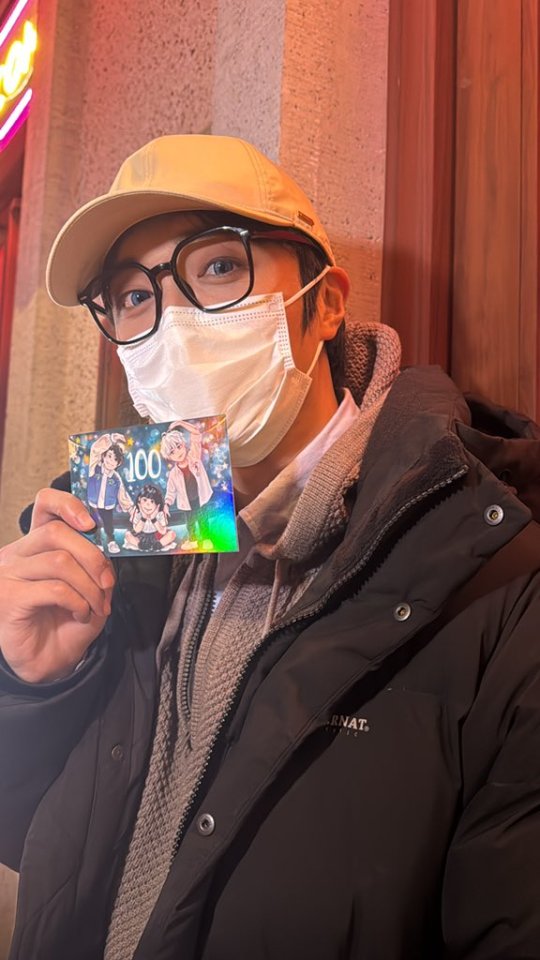
@elaraqwq attended the 100th play, gave away the postcards we made to the audience and SOMEHOW delivered them to the trio actors 😭🧡💙💕 As an absolute legend she is, she sent me the pictures as a proof 🙇♂️ So I lost my mind about the loveliness of it all and took a while to chill o7 💝
But enough of that! Lemme tell you abt today's events ✨
Feb 25th, noon performance: Ji Xiaokun, Guo Hongxu, Cai Lu, Guo Zhenyan, Li Zexi
For special encore they did full version of 'You can forget about it' ('Rock, paper, scissors song') but sung is 3 different dialects: from Hebei, Shandong and Shanghai (lowkey foreshadowing).
TW:CXS's dramatic ass once again puts on the noose, so if it makes you uncomfortable, be warned~

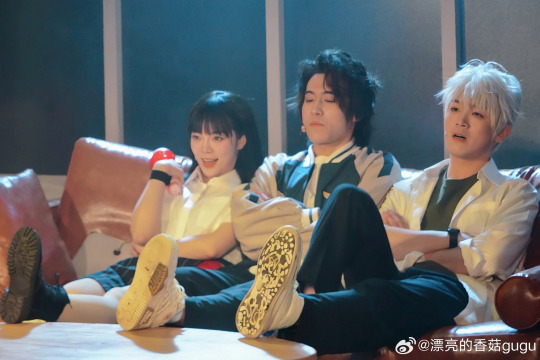


If you've been listening to this song over and over again (like me), you should be able to hear the difference in pronounciation. It's as if they changed the lyrics completely ><
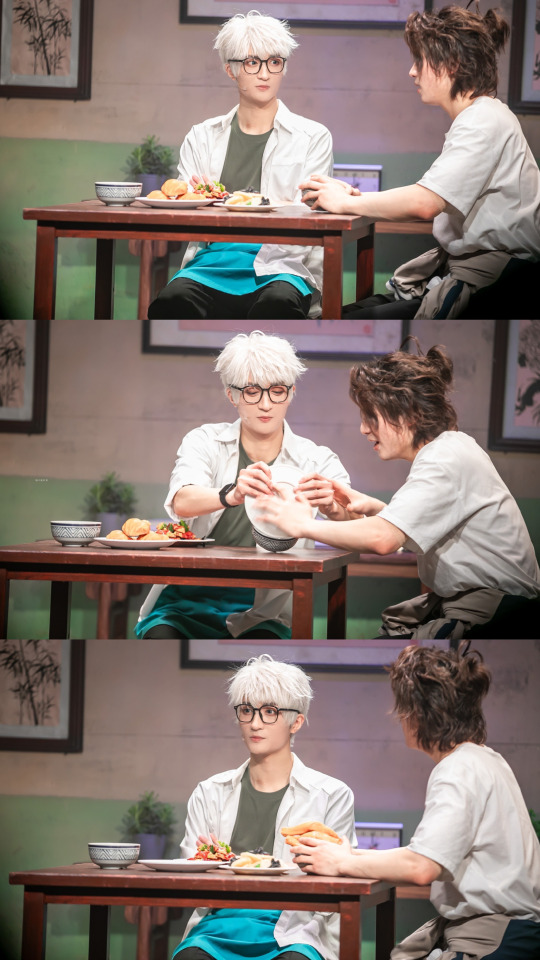
Feb 25th, night, the 100th performance: Cai Qi, Wang Minhui, Deng Xianling, Zhang Jiahao, Zhu Jiayan
It's full version of 'As the saying goes' (earthquake arc mom and son quarrel) with Cai Qi in place of Cheng Xiao and Wang Minhui as his mom. Joined by the rest of cast :>


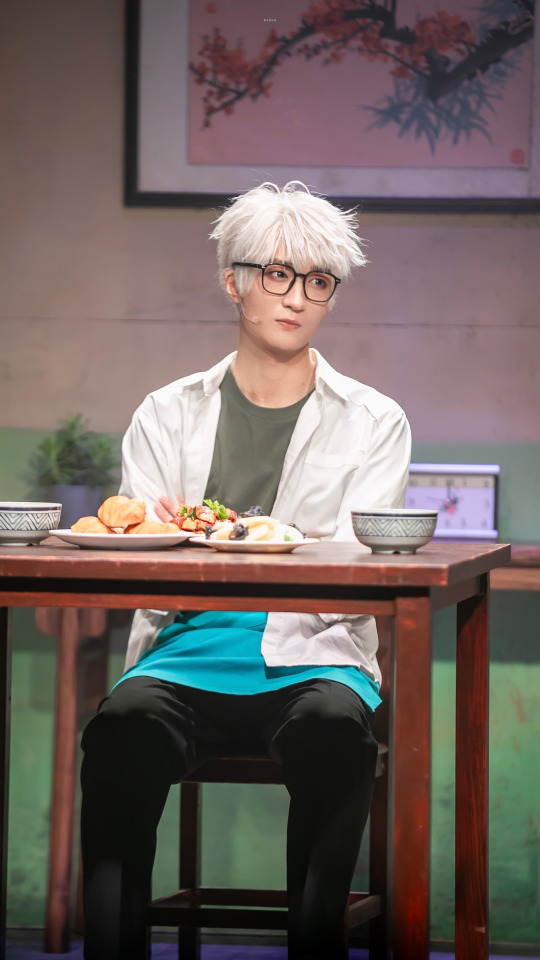

I called the earlier encore foreshadowing bc (like in dongua) the earthquake arc characters speak in Sichuan dialect (the province where the plot takes place). And despite the role swap Wang Minhui used Sichuan as well.
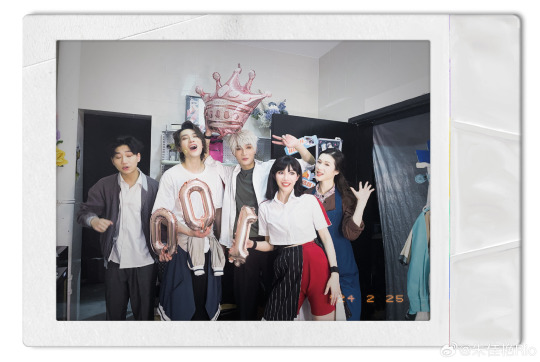
⬆from Zhu Jiayan's weibo






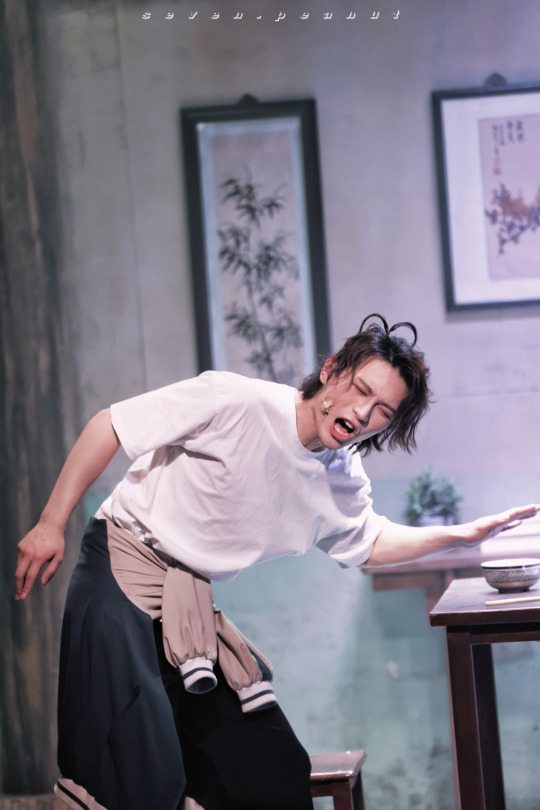
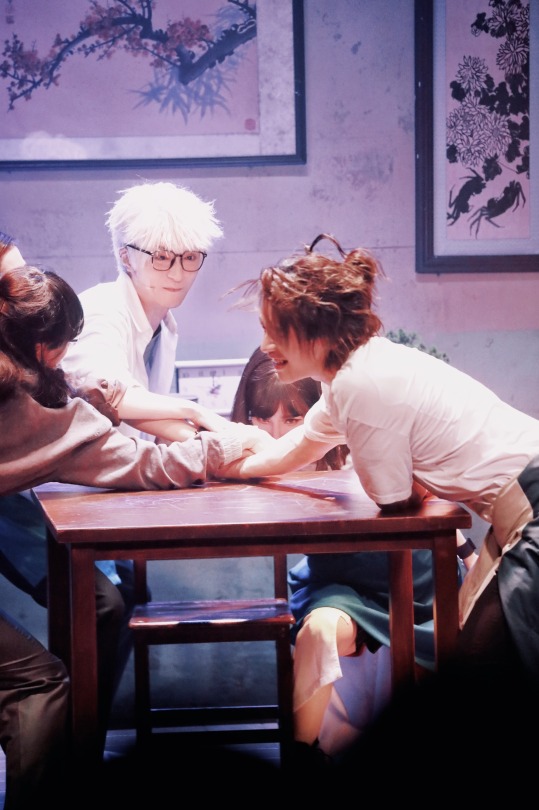





⬆ @/渲染KL不加糖_瑾家 posted this picture on weibo with caption: 'Chicken run'. And I think it's the funniest joke ever ><

Check the replies for both videos 💙🧡 And I hope you'll have just as good time watching it as I did ^0^
#link click#shiguang dailiren#link click musical#lu guang#cheng xiaoshi#qiao ling#ji xiaokun#guo hongxu#cai lu#cai qi#deng xianling#wang minhui#source: weibo#ily lc musical#ily you shiguang nation link clickers#my depression is cured
70 notes
·
View notes
Text
[Hanfu · 漢服]Chinese Eastern Han Dynasty (25–220 A.D.) Hanfu-Military Officials Hanfu Based On Han Dynasty Relics


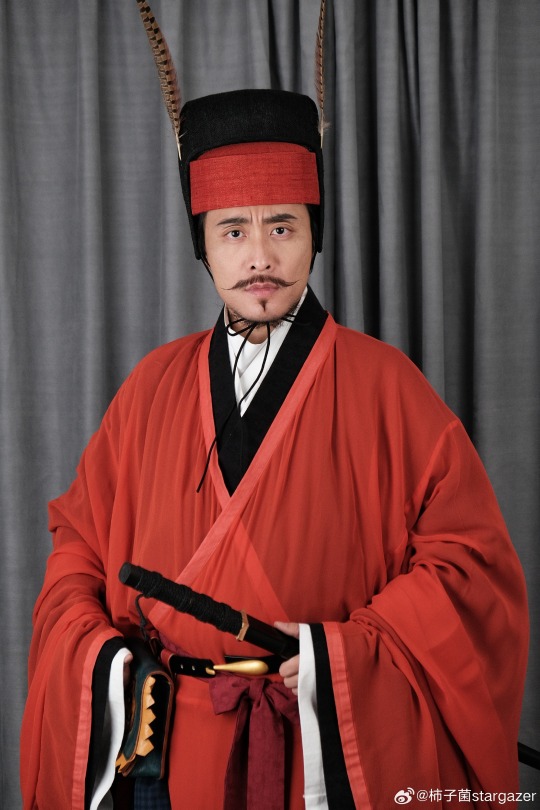


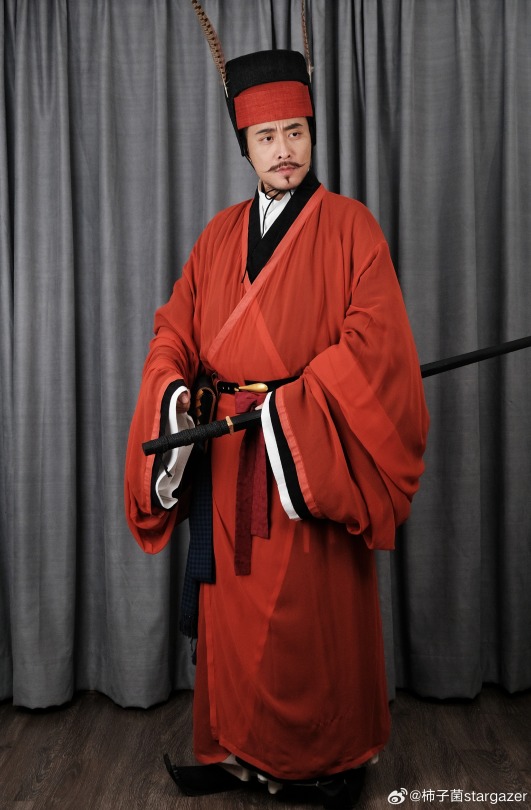

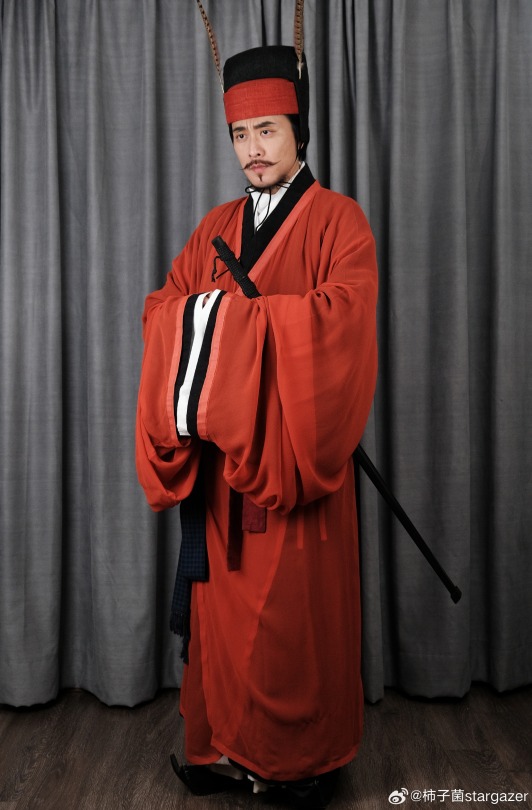
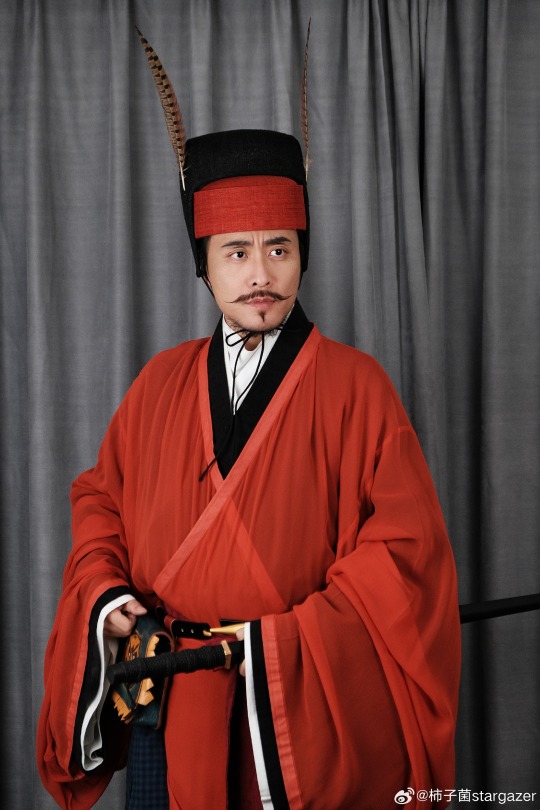
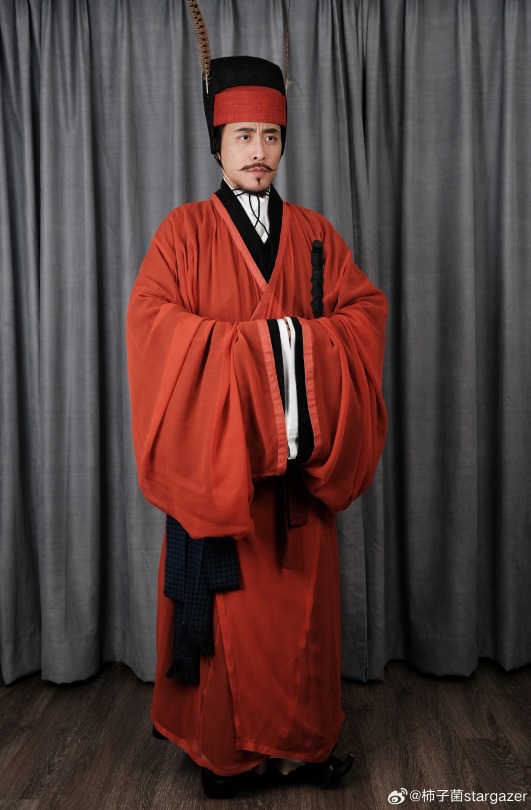
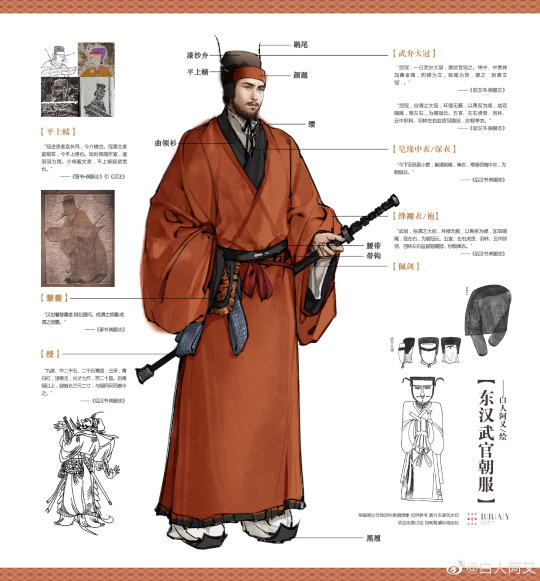
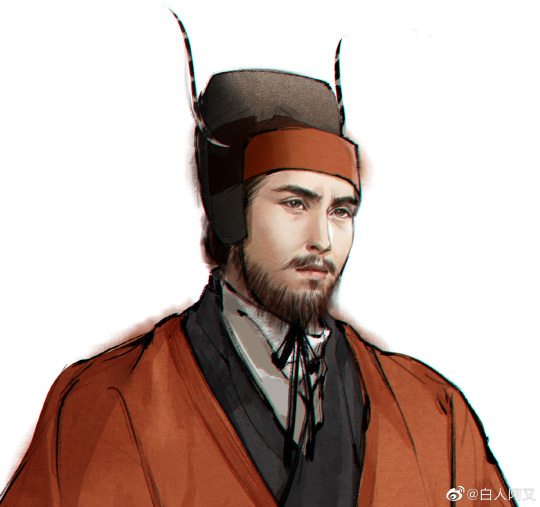
【Historical Reference Artifacts】:
Refer to the picture below to distinguish between 【civil officials(Black)】 and 【military officials(Red)】 in the Eastern Han Dynasty
Civil Officials[Black]:Murals from the Zhucun tomb in Luoyang, Henan/ 東漢晚期河南洛陽朱村墓室壁畫
For information about Eastern Han Dynasty civil servants, please refer to the following link:
https://chinesehanfu.tumblr.com/post/718472603917025280/reference-artifacts-chinese-western-han
Military Officials[Red]:Portrait bricks in Beizhai, Yinan, Shandong/山東沂南北寨東漢畫像磚
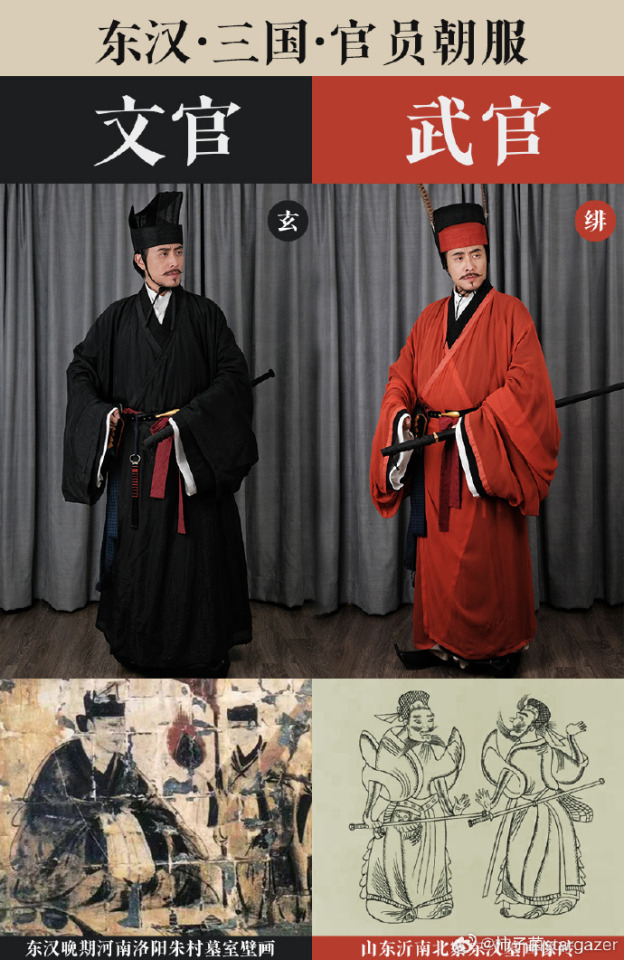

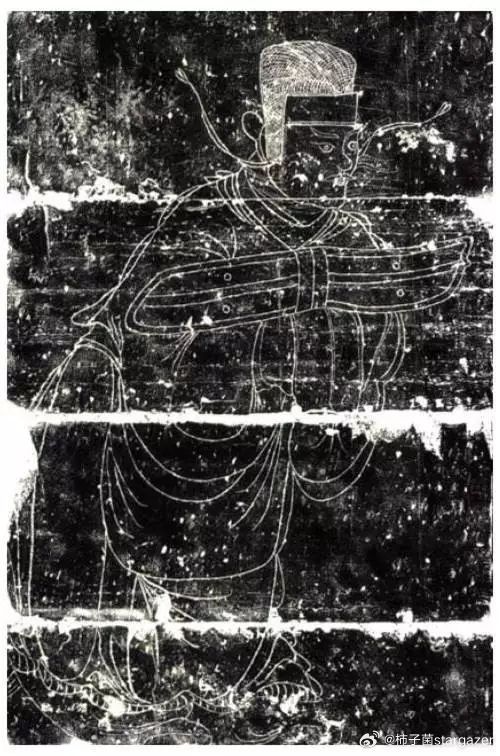

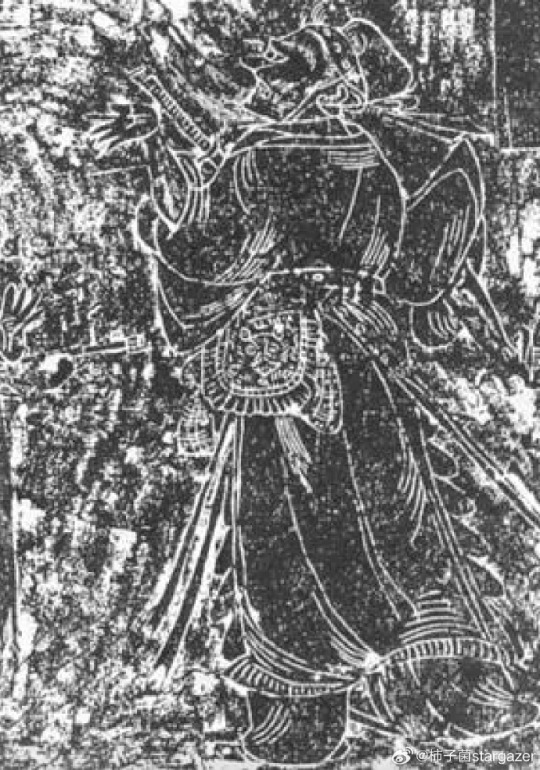
Eastern Han Dynasty- Stone figure holding a shield in the pavilion,Beijing Stone Carving Museum.
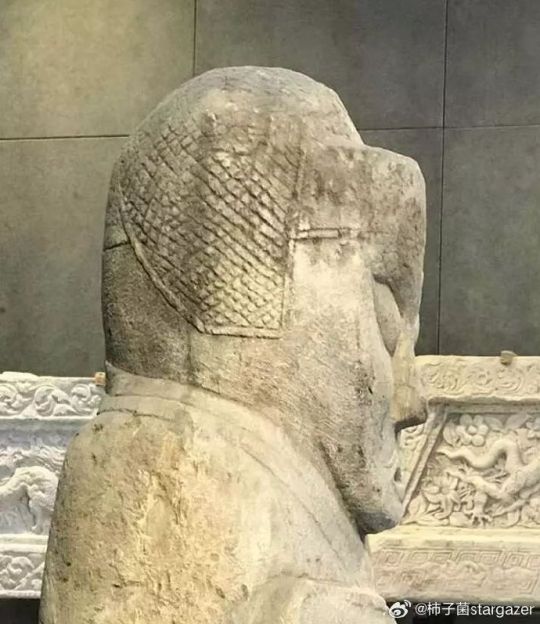

【History Note】
【武弁大冠Wubian Daguan/Military Officials Crown】
Also known as Wu Guan, He Guan, 鶡冠,鶡(pronounce:hé) is a warrior crown with "tail-feather of a brown longtailed pheasant". It was the crown of warriors from the Qin and Han Dynasties to the Sui and Tang Dynasties. During the development process, the shape of the crown changed with different periods.
※鶡(pronounce:hé):Crossoptilon mantchuricum,a bird that resembles a pheasant and is good at fighting,is one of the rare endemic animals of China
A military officials crown was unearthed from Xinmang Tomb No. 62, Mozuizi, Wuwei, Gansu Province. The crown was wrapped with thin bamboo tendons, supported by a bamboo ring on the top of the head, and lined with a bow. It is a complete example of what a military officials wore.
________________
🙋♂️Model & Recreation Work:@柿子菌stargazer
📸Photo: @张宇莹-小花
🎨Illustration Artist:@白人阿��
🔗Weibo:https://weibo.com/1812652835/NtJb89gIi
________________
#chinese hanfu#Eastern Han Dynasty (25–220 A.D.)#Military Officials#hanfu#hanfu accessories#hanfu_challenge#chinese traditional clothing#china#chinese#hanfu history#china history#historical fashion#chinese history#hanfu man#hanfu illustration#chinese fashion#漢服#汉服#chinese style
106 notes
·
View notes
Text
2️⃣
‘Comprador’ refers to an agent of a large multinational corporation whose typical job responsibility is taking a small underdeveloped nation and turning it into a vending machine for a natural resource - oil, coffee, coal, minerals - then getting that nation so dependent on selling those raw materials to that company that they effectively control it.
Unrelatedly, the Global Logistics Network was the single largest anything of 2069.
They weren’t a monopoly, no, no, no. They were… you see, the crowded and fragile system of intercontinental shipping was simply too important to be left in the hands of any single nation. You all saw what happened when the Brits monopolized it, and when the US monopolized it after them. You’ve seen how nations owning major canals turns them into a hive of corruption. Shipping belongs to the world, which means it belongs to the GLN.
They were headquartered in Qingdao, a major city in the Shandong province of China. Don’t be fooled, China fumbled the past few decades as much as everyone else, but every institution needs a head, and every head needs a headquarters, and the headquarters of the Global Logistics Network were located in Qingdao. The complex of skyscrapers that comprised GLNHQ was large and populous enough to form its own city-state, a closed loop of offices, gyms, fabricators, dormitories, labs, shops, copackers, cafeterias, and warehouses. You could spend your whole life there without ever setting foot on the earth itself. Many did.
Such was the Global Logistics Network. Like capitalism rising centuries ago from the sclerotic and shambling remnants of feudalism, the GLN rose from the old ways of hyper-financialized over-leveraged capitalism to create something new, something so new it didn’t even have a name yet. Much like the transition from feudalism to capitalism, things were better overall, but good lord, what a low bar to clear.
Towering above it all at the top floor of the central skyscraper sat Meng “Harold” Jianli, sole co-founder of the GLN. One might wonder how someone could be a ‘sole co-founder,’ and the answer was that the GLN was so powerful and omnipresent that its leader could have called himself a living god for all the power that sat upon his person. He certainly had more power than those who had historically claimed the title of living god.
But Meng “Harold” Jianli was no god, living or otherwise. Despite the vast power seated upon his person, or perhaps because of it,he looked rather disheveled, with a jowly face like splotchy old parchment, a sagging belly, and a crudely functional flat-top of black hair. His suit was slack and rumpled - his weight had a tendency to fluctuate wildly thanks to the stress.
It was stressful, being in charge. Past a certain point, you don’t really get more powerful, you just have more people to babysit and more fires to put out. He had to keep an eye on Novo Karo Bioresearch, or they’d be so excited to show off their new research that they’d start doing eugenics. He had to keep an eye on Vae Victis Engineering, or they’d get so excited testing out their new tech that they’d start a world war. And now, with his hands steepled and his brow furrowed, he had to keep an eye on the vtuber that the American League had elected president.
He stared at Sunny Roosevelt. Sunny smiled back and gave him a little wave.
“I am willing to work with you, miss Roosevelt. The GLN is willing to work with just about anyone, it’s one of our biggest strengths.” He shifted effortlessly between ‘I’ and ‘we,’ treating the two as synonyms. “The issue is, we are still trying to figure out what your administration actually intends to do.”
“Hmm.” Sunny put a finger to her chin, pursed her lips, and looked upward. An ellipsis appeared over her head. “You got a copy of my campaign objectives, right?”
“Are you referring to this?” He held up a single sheet of paper, on which was written ‘make anime real’ in 48-point font and nothing else.
“Yep!”
“And you think this qualifies as a roadmap for your presidency.”
“Personally, I think it’s quite ambitious.”
Harold puttered his lips. “Miss Roosevelt-”
“Please, call me ‘mommy.’”
“Miss Roosevelt, I understand that you are standing on rather shaky ground. The National Board of Directors is being dragged away from the provisional US government days,” he said, which neglected to mention how half of the National Board of Directors were former GLN big names, “and the new state congress acts more like a rehab clinic for celebrity podcasters than a governing body,” he said, which stood just fine without caveats.
“I understand,” Sunny said, nodding and still smiling, “I’m a bimbo who’s in way over her head, so you’re going to unveil the GLN’s big five year plan and tell me to follow it like a good little girl.”
Harold was already in the process of lifting a hefty unlabeled binder, intending to thump it dramatically atop his desk, but the accuracy of Sunny’s comment left him slightly deflated. “I prefer to think of it as an advisory-”
“And then I’ll kiss up to you during our conversations,” Sunny continued, “but stall and drag my feet when it comes to actually implementing anything, and you’ll say,” she loosened her face and dropped her voice, “dammit Sunny, are you trying to play me for a fool?”
“I don’t sound like that. I don’t sound like Richard Nixon,” Harold protested, sounding kind of like Richard Nixon.
“And then I’ll say, it’s not me, it’s the state governors, they just refuse to cooperate. The new congress is one big old boy’s club. Even the Board of Directors is demanding overly-detailed descriptions of everything before they’ll sign off on it, it’s malicious compliance!” Sunny hung her head and threw her hands, wailing, “you set me up to fail, Harold. You set me up to fail, you rat bastard!”
“Are you done?”
Sunny straightened back up. There was that smile again. “Yep. That was fun.”
“In any case, while I understand you are currently something of a figurehead, even figureheads cannot afford to do nothing. Not when a third of the country is still lacking even the barest measures of centralized government.”
“What, you mean the Midwest Autonomous Zone?” A little question mark appeared over Sunny's head. “I mean, yeah, but it’s not like that started with the fall of the old US. Missouri was a dump long before the thirties.”
“Be that as it may-”
“That’s the 2030s, because we’re in the future.”
“Miss Roosevelt.”
“Please, call m-”
“No. Miss Roosevelt, why did you become president if you are so averse to actually presiding?”
Sunny shrugged and let out a huffy little sigh. “Look, most people weren’t exactly begging to have America back. Not even Americans. They don’t want someone with a bold, inspirational vision. Bold, inspirational visions are what start world wars, for George’s sake. I, for one, believe that bench-warming is not just a good idea but a moral imperative.”
“George’s sake?” Harold repeated.
“Saint George Washington. Oh, right, America’s got a brand new religion now, it’s called Founderism. We took the whole Founding Father worship thing and made it an official heresy. Also, Jesus was a small business owner.”
Harold grimaced and considered leaving the former USA to the wolves for a few more decades.
40 notes
·
View notes
Text
History of Tan Tui
Tan T'ui or Spring Leg 譚腿 / 潭腿 / 彈腿- This style could be one of the oldest styles that is still widely practiced today. In the past, it was required that all high schools have physical education and that Tan T'ui be part of its curriculum. Every student had to learn Tan T'ui before they could graduate in China. During the Sung Dynasty, Tan T'ui was regarded as a complete style. The techniques within the set were all practical and easily used. There are many versions on the origin of the style.
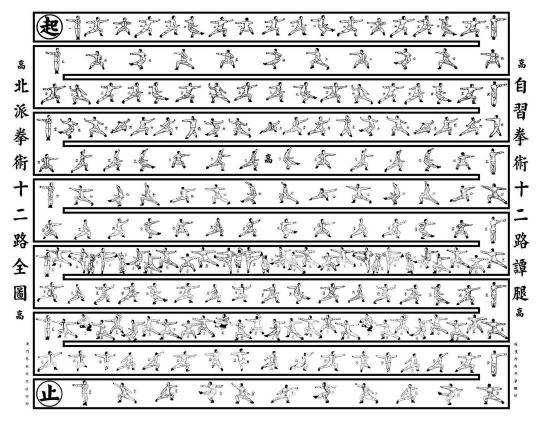
The first theory is recorded in the text, Liu Ho Style by an unknown author. It states that Liu Ho Style uses Tan T'ui as one of their basic foundation sets because it contains only a few moves and is easy to learn. There is a section on the origins of Tan T'ui. It states "There was a monk out preaching and traveling. On the road he saw two roosters fighting. The red rooster was larger than the white skinny rooster. After a while, the white rooster was losing and tried running away. The red rooster gave chase. The white rooster ran to the base of a hill which was a dead end and could not run any further. The red rooster caught up. Having no choice, the white rooster sprang up and struck the red rooster with both its talons. The red rooster fell down dead with its belly cut open. Seeing this, the monk thought, `If a man could practice so his legs were strong, it would be the same as a weak person overcoming the strong'. After a few years of study, he developed the ten (10) rows of Tan T'ui.
Second Theory: The Chinese Moslems or the Hui give credit to a Hui native of Xinjiang, Chamir (Cha Shang Yir) (1568 A.D - 1644 A.D.) as the creator of Tan T'ui Style. During the prime of his life on the coast of Fukein, Japanese pirates were raiding the coast. The government of the Ming Dynasty ordered their troops to the coast to battle against the Japanese pirates. Chamir joined the army and was assigned to go south. As the soldiers were marching down the coast under harsh conditions, Chamir was taken ill in a mountain village, Liaocheng, in Guanxian County, in Shangtung Province and was left behind to recuperate. The local peasants treated him until he was well. Chamir repaid their kindness by teaching the Twenty-eight (28) Rows of Tan T'ui (Spring Legs) which he devised and performed for many years. The boxing style consisted of 28 routines, which were put in alphabetical order, according to the Arabic language commonly used by the Hui. The monks at the nearby Shandong Long Tan Temple learned of the Tan Tui system from the locals and later incorporated it into their fighting routines that they practiced. Later the Twenty-eight (28) Rows were condensed into Ten (10) Rows of Tan T'ui (Spring Legs).
This is indeed an interesting information except the fact that there was no Hui Muslims (Chinese Muslims) in Xinjiang During Ming Dynasty, they came to Xinjiang after the Qing Dynasty invasion of Xinjiang in 19th century. The name "Xinjiang itself was introduced by Chinese invaders in 1884. Secondly, his Chinese name was Cha Shang Yir, which to me does not sound like a real Chinese name but rather a Chinese translation of his name. His Muslim name was Chamir but I don't see how the Chinese would get Cha Shang Yir from that... I think Cha Mu Er would seem more likely. So now I am wondering two things. First do the Hui take Muslim names or just use their Chinese name? Second if Chamir was his Muslim name and Cha Shang Yir was his Chinese name did he have a third name that was his birth name?
Besides, the article mentioned that he used Arabic scripture which was used by Uighurs at that time and still being used today. From this analysis, he might be a Uighur, or by a remote chance an Uzbek or Tatar. If the name "Chamir" is correctly translated into English, he cannot be a Hui moslem. Well then that pretty much proves that he could not be Hui and therefore he did not exist and the Muslim did not create Tan Tui as many current people believe is true.
Third Theory: Many people assumed the first character in Tan T'ui was the surname 譚 of the creator of the style. This would translate into Tan's Legs Style. As the story goes, Tan was very good fighter from Henan and had developed these set of techniques. his skill was deep and abundant, he defeated all challengers. His students who taught his method therefore used “Tan” in the name. He is credited as the individual who brought the style to the Shao lin Monastery. Others say he is credited as the first one who brought the style out from the Shao lin Monastery. The Shaolin version mentioned earlier uses a different “tan” altogether (彈), meaning “springy”, “snapping”, or “to shoot”, describing a quality of the kicking rather than a source of the system.
Fourth Theory: Shaolin's Tan Tui is given credit to Monk Xian Ji who while in residence at the temple in Ling Qing Tan Temple in Shandong Province during the Ming Dynasty. It is said that he traded Shaolin's famous Lohan Fist routine for their Tan Tui routine. Also, Xian Ji is said to have also added an additional 2 roads to the original 10 Road Tan Tui Routine.
Fifth Theory: Tang Dynasty. The city of Ling Qing is situated between the warring factions of the Song, Liao and Jin Courts. An infantry solider named Kun Lung Dai Shi took refuge in the Lung Tan Temple located within Ling Qing City. Becoming a Monk at this temple Kun Lung formulated the routine Tan Tui (Pond Legs) with 10 Roads. It is said that this set was created in order to counter the Liao & Jin's superior upper body grappling skills. Ling Qing City became a major trading center due to the Canals built during the Yuan Dynasty. For this reason, it is believed that Tan Tui was able to spread throughout China.
The Sixth and last theory states that the word, Tan(潭} is the abbreviation for a monastery in Shangtung Province called Lung T'an Ssu (山東龍潭寺). The founder of Tan T'ui has been attributed to a monk named Hsuan Kung. He was known to have travelled widely in the northern part of China. He was searching for simple movements in exercises to form an elementary base. After much time, he returned to Lung T'an Monastery and reflected on his observations. Hsuan Kung later developed ten (10) rows of techniques for both left and right sides and it contained approximately one hundred and fifty (150) movements.
Although scholars have argued that the last theory is probably the correct origin for Tan T'ui Style, there exist two (2) problems in their argument and can only be solved by indirect proof. First, there was no monastery found or recorded in the Shantung Province and secondly the Lung T'an Monastery is located in the Honan Province. It is common knowledge that the geography does change over a period of time. Almost one thousand years has passed since the origin of Tan T'ui and unfortunately much of the physical and man-made surrounding in Shantung Province have changed and or no longer in existence. Because of this, there is little or no physical evidence to show that there once stood a Lung T'an Monastery. Also, with the rise and fall of different dynasties, the burning of books was a common ritual. Any recorded history of a Lung T'an Monastery in Shantung Province could have been destroyed. The most logical theory on the origin of Tan T'ui is that the Shao lin Monastery in Honan Province is located near a lake called Lung and on the other side of the lake is a monastery called Lung T'an. Tan T'ui could have originated in this monastery and very easily have crossed the lake to the Shao lin Monastery.
In recent history, Chin Woo Association was the first Public Gymnasium founded (in 1910) for the purpose of making Martial Arts training available to anyone (who could pay). The recognized founder was Huo Yun Jia, an exponent of the Mizong System. Part of this system was a version of the 10 Road Tan Tui that Huo Yun Jia demonstrated often. Due to his sudden death not many of his students had the opportunity to learn this version. Chao Lien Ho was hired to head up the organization and as part of his task he formulated a specific curriculum. While an exponent of Mizong he also had studied various Shaolin based systems as well. The first form required to be studied by beginner students is a 12 Road Tan Tui. While it is not sure where this version comes from, it has become the most popular version taught throughout the Chinese Martial Arts due to the fame of the Chin Woo. It is thought Chao Lien Ho took the 10 Road Mizong Tan Tui and evolved it into the current12 Road Chin Woo Version.
To add to the confusion, the school of Honan Shaolin states their oral history says Tan Tui came from a student named Ji Xiang Tan (济相潭) and he brought Tan Tui to Shaolin during the Ming Dynasty. Their Tan Tui set was named Xiang Ji Tan Tui 相济潭腿.
Two-person Tan Tui was created by Chao Lien Ho in the Jing Mo Association and became part of their curriculum in 1915. Rare chart of 12 row is shown here:
Summary
In general, there are styles that practice different versions of Tan Tui. Historically, 10 row is believed to be the first set (originated in the Longtan Temple in Shandong Province and was created by Master Kun Lun.). This Tan Tui is called Linging Tan Tui. Generally, BSL teaches 10 rows, Mi Jong teaches 10 rows, Northern styles such as Eagle Claw who are connected to Jing Mo teach 12 rows. Huo Yuen Chia brought his 10-row version from Mi Jong and added with the help of other Northern masters such as BSL, Eagle Claw, Cha, Mi Jong, etc.) two rows to the 10-row version. Seven Star Praying Mantis teaches 14 rows (credit to Master Lo Kwan Yu), A Wu Tang School in Taiwan teaches a 16 row, and Ch'a style teaches a 28 row. There are also a Shaolin Tan Tui developed by Ji Xiang Tan (济相潭) in the Ming Dynasty who brought Tan Tui to Shaolin. By combining Kun Lun's version with Lohan and added two more rows, the 12-row set was named Xiang Ji Tan Tui 相济潭腿. And there is another version known as Jiaomen Tan Tui as practiced by the Hui people. Jiao means Hui Sect This one is a 10-row set. Last Tongbei Tan Tui has their own version which is a combination of different sections of their techniques from Tongbei. It consists of 12 rows.
Source of Information:
1. Oral Transmission from Sifu Wong Jackman
2. Charts of Tan Tui from Sifu Wong Jackman
3. Chinese Martial Arts and the Hui, Kung Fu Magazine Form by Gene Ching 1990 to 2005.
4. Mkma.net (web site)
5. Moslem Kung fu: The Fist of the Bodyguards by Ted Mancuso 1999, Inside Kung fu Magazine
6. Northern Shaolin Twelve Row Tan Tui by Chao Lin Ho Ching Wu, Shanghai 1920
7. Tam Tui, Northern Shaolin Snapping Leg by Alexander I. Co, Inside Kung Fu December 1984-1989.
8. Tan Tui by Chang, Wu Lum #7 1983 (Chinese)Tan Ti the 17 Form Method by Robert Le, Ancient Sets of Kung Fu, Volume 1, #2, #3, #4, #5,
9. Ten Fundamental Chinwoo Routines, Tantui and Gongliquan by Lam Wing-Ki and Ying Fun-fong, IBSN 962-85291-5-3 2000.
10. Tom Toy: Springing Legs, Their History and Relation to Shaolin, by Shaolin Instiute.com, November, 2003.
Chinese Books
1. 10 Row Tan Tui by Wong,1983
2. 12 Rows Tan Tui Methods by Wong, Taiwan, 1966, Reprint
3. 12 Row Tan Tui by Wong, Uk, reprint
4. Northern Fist China Best, by Yang, HK, 1970
5. Northern Fist, by Chu, HK, 1969, reprint
6. South, North Fist Best Chinese Fist Arts by Li, HK, Reprint
34 notes
·
View notes
Note
I started reading LOCH after seeing do many posts about the adaptations, and now I can't help but wonder: Do you think the Jin Sect in MDZS was an intentional reference to the Jin dynasty villains, what with their flaunting an imperial color in their clothing and their lots and lots and lots of scheming as opposed to bald-faced battle skill? Or are "Jin" villains in general just enough of a genre convention that MXTX passively absorbed it?
Okay so, I think this is a bit of a conflation of a number of different things, and I'll explain in more depth, but upfront:
No, I do not believe the Jin "villains" in LOCH share any similarity in any way with the Jin Sect in MDZS passively absorbed or otherwise.
Let me explain:
The Jin mentioned in Jin Yong's Legend of the Condor Heroes, especially the Wanyans -- Wanyan Honglie and the rest of the Jin imperial family -- are based firmly in the real history of the fall of the Southern Song dynasty. (circa 12th century). The Da Jin/Jin Empire was created by the Jurchen people and occupied much of what used to be the northern portion of what, at the time, was considered Song territory. (see wikipedia article here for more nuanced discussion of what the "Jin Empire" was.)
The Jin Sect <- aka a bloodline sect of Presumably Han Chinese People Surnamed Jin (we have no canonical evidence to believe any of the sects presented to us in MDZS are of any ethnicity besides Han btw), are based in Lanling County in the Shandong Province of a historical fantasy time period. There is no resemblance between the two. The Jin in MDZS presumably wear a lot of yellow/gold because their surname itself means...yellow/gold.
If I DID have to say "I think the Jin were inspired by xyz from Jin Yong's novels" I would probably think that they were inspired in part by the Songshan Sect in one of Jin Yong's later novels Xiao Ao Jianghu, because their sect leader Zuo Lengchan is a greedy despotic semi chief cultivator type persona who preys on jianghu infighting and the youth of various sect leaders in the Five Mountain Sword Sect Alliance after he's politically knocked off other older more experienced sect leaders, is obsessed with a cultivation manual that will make him #TheMostPowerful, commits atrocities like massacring whole sects, and the Songshan Sect wears....a lot of yellow.
Also as an addendum: "Jin" villains are not remotely a wuxia genre convention. They can't be passively absorbed. The discussion of the Jurchen people in LOCH and why they are cast as villainous in the novel is directly correlated with the colonization of the Han Chinese during that time period in history.
21 notes
·
View notes
Text
Duoyinzi (多音字) That Have Betrayed Me on a Personal Level
This is a continuation of my 多音字 series. You can view the last post here. Today I’m focusing specifically on 20 characters that left me very surprised when I found out they have other pronunciations!
For some of the more basic characters, I’m not including sample vocab words this time. But I have added some lively commentary :)
1)喝
喝 hē - to drink
喝 hè - to shout
喝彩 hècǎi - to acclaim / to cheer
Of course we all know 喝 hē ask in to drink. I very recently encountered the word 喝彩, and I assumed it was pronounced hēcǎi. Nope. I was so very wrong.
2)上
上 shàng - on top / upon / above / upper / previous / first (of multiple parts) / to climb / to get onto / to go up / to attend (class or university)
上 shǎng - used in 上声
上声 | 上聲 shǎngshēng - falling and rising tone / third tone in modern Mandarin
上 shàng is one of the first characters many of us learned. So you can imagine how betrayed I felt when I learned that it can also be pronounced shǎng. Thankfully, this seems to be isolated to the word 上声.
3)大
大 dà - big / huge / large / major / great / wide / deep / older (than) / oldest / eldest / greatly / very much / (dialect) father / father's elder or younger brother
大 dài - see 大夫
大夫 dàifu - doctor / physician
This was another huge betrayal. You see, I started learning Chinese about 15 years ago. 大 was likely one of the first characters I ever learned, and I just never imagined in could be pronounced as anything but dà! Has everything been a lie?
4)哪
哪 nǎ - how / which
哪 né - used in 哪吒 / Taiwan pr. nuó
哪吒 Nézhā - Nezha, protection deity / Taiwan pr. nuózhà
When I saw Nezha written in Chinese for the first time, I was very confused. I just didn’t get how the né sound could be my old friend 哪. And apparently in Taiwan it has a whole different pronunciation. Ugh!
5)降
降 jiàng - to drop / to fall / to come down / to descend
降低 jiàngdī - to reduce / to lower / to bring down
降落 jiàngluò - to descend / to land
下降 xiàjiàng - to decline / to drop / to fall / to go down / to decrease
降 xiáng - to surrender / to capitulate / to subdue / to tame
投降 tóuxiáng - to surrender / surrender
I was really convinced that I was just hearing things wrong with this character. I first heard the word 投降 in Chinese songs, so I thought I was mishearing the lyrics. Nope—降 is a 多音字.
6)济 | 濟
济 | 濟 jì - to cross a river / to aid or relieve / to be of help
经济 | 經濟 jīngjì - economy / economic
济 | 濟 jǐ - used in place names associated with the Ji River 济水 or in 济济 / surname Ji
济南 | 濟南 Jǐnán - Jinan, subprovincial city and capital of Shandong province in northeast China
I was really surprised to learn that I don’t know many words with the character 济. It’s pretty much just 经济. The only other time I’ve ever actually seen the character 济 is in the name of the city of Jinan (济南).
7)混
混 hùn - to mix / to mingle / muddled / to drift along / to muddle along / to pass for / to get along with sb / thoughtless / reckless
混合 hùnhé - to mix / to blend / hybrid / composite
混乱 | 混亂 hùnluàn - confusion / chaos / disorder
混 hún - confused / dirty / to mix / muddy / variant of 浑
混蛋 húndàn - scoundrel / bastard / hoodlum / wretch
I was very surprised to see that 混蛋 can be pronounced húndàn because I don’t think I’ve ever heard 混 as hún before. I think hùndàn sounds better, and luckily it’s also a valid pronunciation. Two fourth tones are better to yell.
8)蔓
蔓 màn - creeper / to spread
蔓延 mànyán - to extend / to spread
蔓 wàn - tendrilled vine
藤蔓 téngwàn - vine / also pr. téngmàn
蔓 mán - turnip / Brassica campestris
蔓菁 mánjing - turnip / wild cabbage
Until recently, the only word I knew with this character was 蔓延. Then I learned 藤蔓 via this performance. Apparently 藤蔓 can be téngwàn or téngmàn, but I have only ever heard téngwàn. 蔓 can also be pronounced mán in 蔓菁 mánjing, which is some sort of turnip. I don’t like turnips.
9)佛 | 彿
佛 fó - Buddha / Buddhism / abbr. for 佛陀
佛教 Fójiào - Buddhism
佛系 fóxì - chill about everything (typically used to describe young people who don't buy into aspirational society)
佛 | 彿 fú - seemingly
仿佛 | 彷彿 fǎngfú - to seem / as if / alike / similar
I have known both the fó and fú pronunciations for a while, but I never realized they were written the same. However, 仿佛的佛 can be written differently in traditional characters (彷彿), so I guess that avoids any confusion.
10)压 | 壓
压 | 壓 yā - to press / to push down / to keep under (control) / pressure
压力 | 壓力 yālì - pressure
压抑 | 壓抑 yāyì - to constrain or repress emotions / oppressive / stifling / depressing / repression
压迫 | 壓迫 yāpò - to oppress / to repress / to constrict / oppression / stress (physics)
压 | 壓 yà - see 压根儿
压根 | 壓根 yàgēn - from the start / absolutely / entirely / simply
I recently started watching the show 《摇滚狂花》, and the characters have been using the word 压根 a lot. I was literally backing up and replaying lines to confirm that I was actually hearing yà and not yā, which is the more common pronunciation that I am more familiar with. It appears that the yà pronunciation is actually only used in 压根.
11)片
片 piàn - thin piece / flake / a slice / film / TV play / to slice / to carve thin / partial / incomplete / one-sided / classifier for slices, tablets, tract of land, area of water / classifier for CDs, movies, DVDs etc / used with numeral 一: classifier for scenario, scene, feeling, atmosphere, sound etc.
片面 piànmiàn - unilateral / one-sided
片刻 piànkè - short period of time / a moment
片断 piànduàn - section / fragment / segment
片 piān - disk / sheet
片子 piānzi - film / movie / film reel / phonograph record / X-ray image / also pr. piànzi
照片 zhàopiān - photograph / picture / also pr. zhàopiàn
影片 yǐngpiān - film / movie / also pr. yǐngpiàn
Some words like 影片 and 照片 seem to be acceptable with either pronunciation of 片. Now that I think about it, I’m pretty sure I have heard zhàopiān before—usually with 儿化音. From what I’ve gleaned from various dictionaries, the piān pronunciation is more 口语 and not used in Taiwan.
12)豁
豁 huō - opening / stake all / sacrifice / crack / slit
豁出去 huōchuqu - to throw caution to the wind / to press one's luck / to go for broke
豁 huò - clear / open / exempt (from) / liberal-minded
豁然开朗 | 豁然開朗 huòránkāilǎng - suddenly opens up to a wide panorama (idiom); to come to a wide clearing / fig. everything becomes clear at once / to achieve speedy enlightenment
I was familiar with this character from the term 豁出去. Then as part of my chengyu challenge, I learned 豁然开朗. Here, 豁 is pronounced huò instead. My reaction to this discovery was something along the lines of: oh great, another 多音字!
13)将 | 將
将 | 將 jiāng - will / shall / to use / to take / to checkmate / just a short while ago / (introduces object of main verb, used in the same way as 把)
将来 | 將來 jiānglái - in the future / future / the future
即将 | 即將 jíjiāng - on the eve of / to be about to / to be on the verge of
将近 | 將近 jiāngjìn - almost / nearly / close to
将 | 將 jiàng - general / commander-in-chief (military) / king (chess piece) / to command / to lead
麻将 | 麻將 májiàng - mahjong
唱将 | 唱將 chàngjiàng - top singer
I should have realized this was a 多音字 because of course I know 麻将, where 将 is jiàng. But I never really thought about it, so I didn’t realize 将 was a 多音字 until I learned 唱将 while watching 《蒙面唱将猜猜猜》, China’s version of The Masked Singer. Apparently these is also a qiāng pronunciation of this character, but I have never encountered it before.
14)丧 | 喪
丧 | 喪 sàng - to lose sth abstract but important (courage, authority, one's life etc) / to be bereaved of (one's spouse etc) / to die / disappointed / discouraged
沮丧 | 沮喪 jǔsàng - dispirited / dejected / dismayed
丧 | 喪 sāng - mourning / funeral / (old) corpse
丧事 | 喪失 sāngshì - funeral arrangements
In my experience, the most common word containing this character is 沮丧. Then in one of my readings for Chinese class, I learned 丧事 sāngshì. Unfortunately, I always forget that it’s supposed to be sāng and end up saying sàng no matter the word.
15)给 | 給
给 | 給 gěi - to / for / for the benefit of / to give / to allow / to do sth (for sb) / (grammatical equivalent of 被) / (grammatical equivalent of 把) / (sentence intensifier)
给 | 給 jǐ - to supply / to provide
给予 | 給予 jǐyǔ - to accord / to give / to show (respect)
I was really surprised when I first saw the word 给予 and learned that it’s pronounced jǐyǔ. But here’s the truth: I hear people say gěiyǔ all the time. It’s still good to know about the jǐyǔ pronunciation though.
16)恶 | 惡
恶 | 惡 è - evil / fierce / vicious / ugly / coarse / to harm
恶劣 | 惡劣 èliè - vile / nasty / of very poor quality
恶意 | 惡意 èyì - malice / evil intention
邪恶 | 邪惡 xié'è - sinister / vicious / wicked / evil
恶 | 惡 ě - used in 恶心
恶心 | 惡心 ěxīn - nausea / to feel sick / disgust / nauseating / to embarrass (deliberately)
恶 | 惡 wù - to hate / to loathe / ashamed / to fear / to slander
可恶 | 可惡 kěwù - repulsive / vile / hateful / abominable
好恶 | 好惡 hàowù - lit. likes and dislikes / preferences / taste
厌恶 | 厭惡 yànwù - to loathe / to hate / disgusted with sth
Gotta love it when a character has more than two different pronunciations! When I first learned that 恶 can be wù. Wù is really feeling like the odd one out of this trio.
17)率
率 lǜ - rate / frequency
效率 xiàolǜ - efficiency
比率 bǐlǜ - ratio / rate / proportion
频率 | 頻率 pínlǜ - frequency
率 shuài - to lead / to command / rash / hasty / frank / straightforward / generally / usually
坦率 tǎnshuài - frank (discussion) / blunt / open
率先 shuàixiān - to take the lead / to show initiative
草率 cǎoshuài - careless / negligent / sloppy / not serious
Shuài and lǜ are so different. How can they share the same character? Fortunately I don’t typically confuse them because of how different the meanings and pronunciations are.
18)担 | 擔
担 | 擔 dān - to undertake / to carry / to shoulder / to take responsibility
担心 | 擔心 dānxīn - anxious / worried / uneasy / to worry / to be anxious
承担 | 承擔 chéngdān - to undertake / to assume (responsibility etc)
负担 | 負擔 fùdān - burden / to bear a burden
担 | 擔 dàn - picul (100 catties, 50 kg) / two buckets full / carrying pole and its load / classifier for loads carried on a shoulder pole
重担 | 重擔 zhòngdàn - heavy burden / difficult task / great responsibility
担担面 | 擔擔麵 dàndànmiàn - Sichuan noodles with a spicy and numbing sauce
I’ve been saying 重担 as zhòngdàn this whole time and just recently realized that 负担的担 and 重担的担 are pronounced differently even though the words basically both mean burden!!! This language is just trying to confuse me.
19)省
省 shěng - to save / to economize / to do without / to omit / to leave out / province / (archaic) central government department
省份 shěngfèn - province
省钱 | 省錢 shěngqián - to save money
省心 shěngxīn - to cause no trouble / to be spared worry / worry-free
省 xǐng - to inspect / to examine / to be aware / to pay a visit (to one's parents or elders)
反省 fǎnxǐng - to reflect upon oneself / to examine one's conscience / to question oneself / to search one's soul
At first I was annoyed to discover yet another 多音字. But now I really like the word 反省. It’s useful and fun to say. I first encountered this word in the song 《救生圈》 by 蔡健雅.
20)没 | 沒
没 | 沒 méi - (negative prefix for verbs) / have not / not
没 | 沒 mò - drowned / to end / to die / to inundate
吞没 | 吞沒 tūnmò - to embezzle / to swallow up / to engulf
沉没 | 沉默 chénmò - to sink
淹没 | 淹沒 yānmò - to submerge / to drown / to flood / to drown out (also fig.)
I can’t believe this 多音字 didn’t make any of my earlier posts on the subject. I learned this one quite a while ago, so it doesn’t feel as “shocking” to me anymore. But it was definitely a bit of a surprise when I first learned the mò pronunciation.
#nerdy language stuff#duoyinzi#多音字#chinese#mandarin#chinese language#langblr#studyblr#languages#chinese characters#hanzi#chinese langblr#chinese studyblr#mandarin langblr#mandarin studyblr#learn chinese#learn mandarin#study chinese#study mandarin#learning chinese#learning mandarin#studying chinese#studying mandarin#chinese vocab#language learning#learning languages#mandarin vocab
299 notes
·
View notes
Text
Thousand Autumns Chapter 1 Explanation of Names, Historical Context and Possible Influences
THE WORLD BUILDING!! I could scream. I was so so so impressed with Thousand Autumns.
Aside from literary poetry devices, MXS also uses a lot of historical characters and places in her novels, which was probably why they changed a lot of names in the donghua lol. Personally, I find it really interesting and this was what drew me to this book.
Here’s a round up of Chapter 1! I apologise that it's lengthy and it's a a short history class. But you'll need to know or else you're going to get really confused later on lol. Anyway, it gets a lot better! I came across a few videos that were very helpful for my understanding so I've linked them below.
There are 3 demonic sects, and at least 5 righteous ones in the whole show. And that’s excluding the royalty members 😂 and the Tujue folks. I was so confused when I first started reading and I had to do a lot of historical research myself before I fully understood what was going on.
Locations
玄都 Xuandu - This is where immortals were rumoured to reside in. It was also the name of a Taoist temple (Xuandu Guan 玄都观). This temple is located on Mount Heng and was built in the Southern Qi Dynasty. I’m not sure if this temple was the inspiration behind Xuandu mountain, but it is pretty interesting! Also, incidentally, there is a pavilion named Half Mountain Pavilion that's situated on the same premises. Doesn't it sound a lot like Half Step Peak?
Political Climate/Characters - Northern Qi, Northern Zhou and Chen Dynasty
Thousand Autumns takes place in the Northern and Southern Dynasties, a period where China was split politically during the 420-589AD. During this period, there was the spread of Buddhism and Taoism. This period came to and end with unification by the Sui Dynasty. So lol, if you know your history, you’d know that Thousand Autumns would logically end with the establishment of the Sui Dynasty if the novels continues to the end of the Northern Southern Dynasties period. 😂
The video below explains the role of Yuwen Hu 宇文护 and Yuwen Yong 宇文邕 (Emperor Wu) and their impact on the Zhou Dynasty. MXS puts her own spin on it but it's good to read about it or else it'll get really confusing later on. (I personally feel that her world building is underrated and MXS should get more credit for this!) You can skip to 8:39 of the video if you just want to learn about Yuwen Hu and Yuwen Yong. I'd suggest to bookmark this video whenever you're confused with the timeline of events! The Zhou Empire storyline follows this!
Gao Wei 高纬 of Qi Dynasty - Yet another historical character. The same video talks about the decline of the Qi Dynasty around 32:10
Tujue - Here's a video explaining how the Tujue were a part of all of these.
Hulugu 狐鹿估 is a fictional character but his name is very similar to another Hulugu 狐鹿姑 (note that the pronunciation is exactly the same but the last character is different) who was the Chanyu (Supreme Ruler) of the Xiongnu Empire in 96BC.
Kunye 昆邪 is also a fictional character, but there was a King Kunye 昆邪王 (? - 116BC) in history. According to the historical records 史记, he was defeated by Hua Qubing's army and subsequently became a vassal under the Han Dynasty. After his surrender, he was granted the title of the Marquis of Luoyin (located in modern day Shandong Province). Interestingly, his descendant was called Hun Su 浑苏. (If you've read on, you'll probably know the significance of this haha.)
youtube
Other Notable Characters
凤阁 (Qi) Feng Ge - this either means a beautiful tower, or a government official position in the Tang Dynasty. It’s also the name of a star in Zi Wei Dou Shu, a form of Chinese astrology. People who were born under this star were cultured and talented.
青城山纯阳观易辟尘 Yi Bichen of Chunyang temple on Mount Qingchen - Mount Qingchen’s a sacred Taoist Mountain in Sichuan China. It’s greatly regarded as one of the birth places in Taoism. Chunyang Temple’s a real temple in Guangzhou that was first built in the Yuan Dynasty. (MXS is clearly mix and matching temples with locations 😂) Yi Bichen’s name can be broken down to 易 = Easy, 辟尘 = avoid the mortal world.
雪庭禅师 Zen Master Xue Ting - Xue Ting’s name likely comes from the renowned monk, Xue Ting Fu Yu in the Yuan Dynasty. Xue Ting was his monastic title. He was an abott in the Shaolin Monastery and was famous for inviting martial artists to gather in Shaolin Temple.
临川学宫的宫主汝鄢克惠 Ruyan Kehui, Gongzhu of the Linchuan Academy - Linchuan, located in Jiangxi, has always been known as the “Home of Talents 才子之乡” as many talented people came from Linchuan since the ancient times. The Xuegong/Academy 学宫 is a place of learning. This term has appeared since the Western Zhou Dynasty and was commonly associated with Confucianism. The 宫主 Gongzhu was the title that’s given to the one who was in charge of a Taoist temple. (Okay MXS might not be historically accurate here 😂😂)
Previously discussed topics
Half Step Peak
Regret Peak
Yu Shengyan
76 notes
·
View notes
Text
Aerial footage of a high-speed train passing through Licang district in Qingdao, Shandong province
338 notes
·
View notes
Text
China's national college entrance examination, known as gaokao, will kick off on June 7. This is not only an important moment for the 12.91 million candidates and their families but also embodies the sincere blessings of the entire society. During gaokao, the tradition and consensus of "prioritizing the examinees" have been established throughout the society. For example, the Ministry of Public Security requires prompt release of gaokao-related vehicles involved in minor traffic violations after educational measures have been taken. and multiple barbecue restaurants in Zibo, Shandong Province, will temporarily suspend operation during the gaokao period to create a quiet environment for the candidates.
24 notes
·
View notes
Text
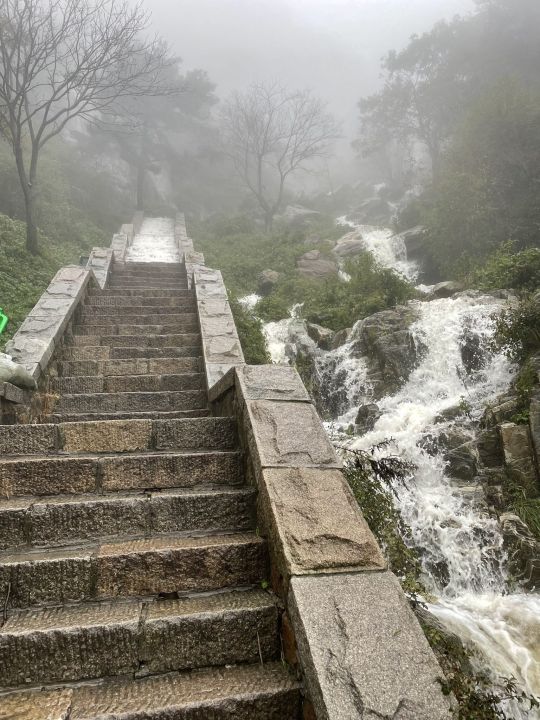
Mount Tai, Shandong Province, China
Taken by Michael Stibilj; 2021
#hidden gems#nature photography#water#stairs#steps#mountains#china#rocks#stones#waterfalls#beautiful places#lush#wilderness#explore#trees#beauty#beautiful#escape#pretty#nature#photography#peace#calm#rushing water#mist#fog#rain#green#nature aesthetic#breathtaking
157 notes
·
View notes
Text
Kilometer Long Museum Emerging from a Lake in China
This impressive new museum in China’s Shandong Province cuts a sleek profile on a lake, bringing water directly to the doorstep of the visitor.
The long, linear form feels elegant and simple, but brings enough thoughtful architectural to create something truly special.
Designed by Japanese architect Junya Ishigami, the Zaishui Art Museum features a thin concrete roof and large, repeated windows…

View On WordPress
5 notes
·
View notes
Text
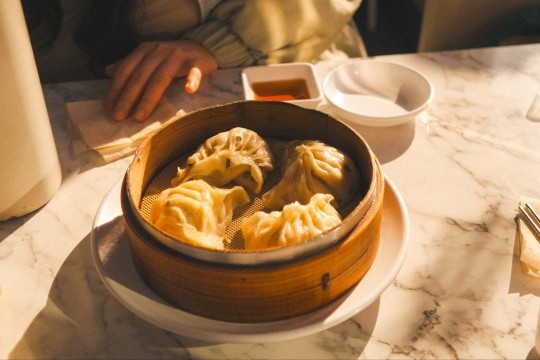
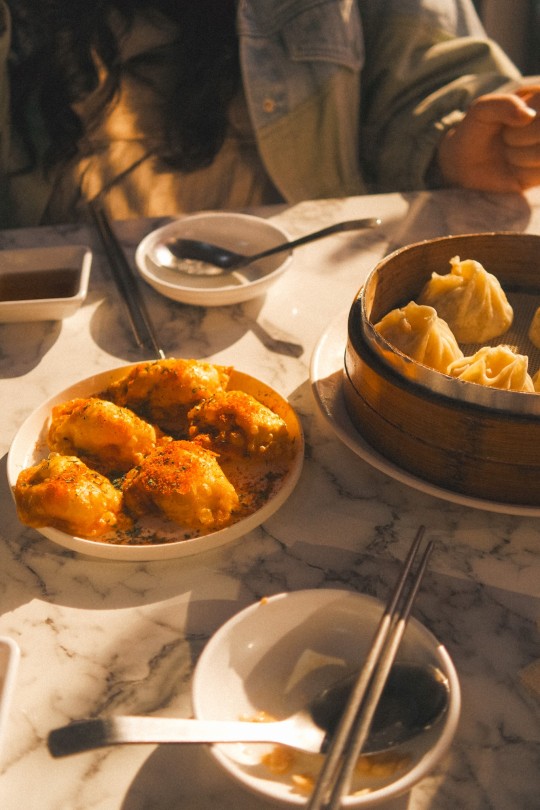
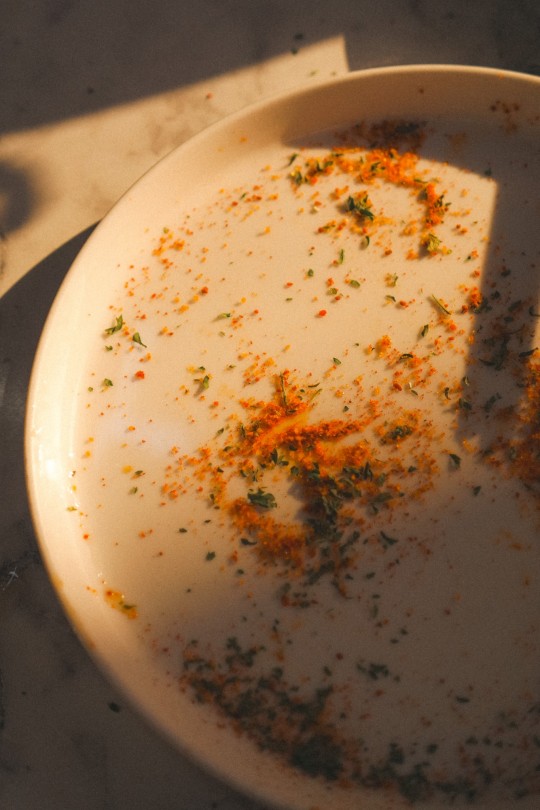

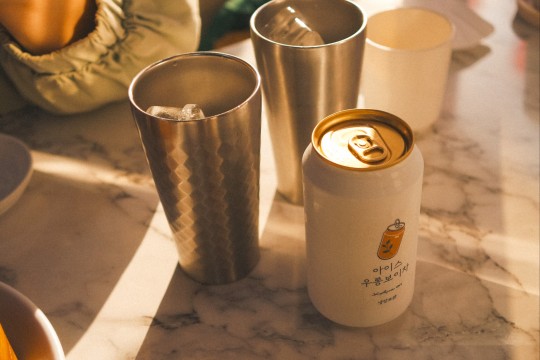
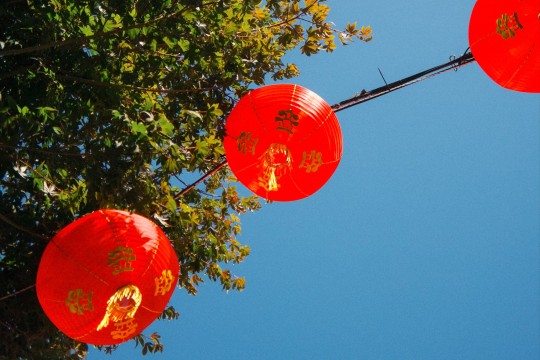
The Busan Chinatown is smaller than Incheon Chinatown, but more organized, neat, and has a comfortable atmosphere. One of the unique things about Busan Chinatown is that the most Chinese restaurants specialize in dumplings. Bacause it is said that the 'Overseas Chinese' here are mainly from 'Shandong Province' in mainland China, so dumplings may be the most famous cuisine in that province.
The dumpling restaurant 'Shinbalwon (Xinfayuan, 新發園)' I visited today is also famous for its delicious dumplings. In particular, the wrapper of the steamed dumplings has a very fluffy texture and smells of delicious aged flour dough. I think its dumplings are several times more delicious than 'Dintaifung', a famous Chinese restaurant chain that I visited a few days ago.
October 1, 2023.
Chinatown, Busan.
16 notes
·
View notes